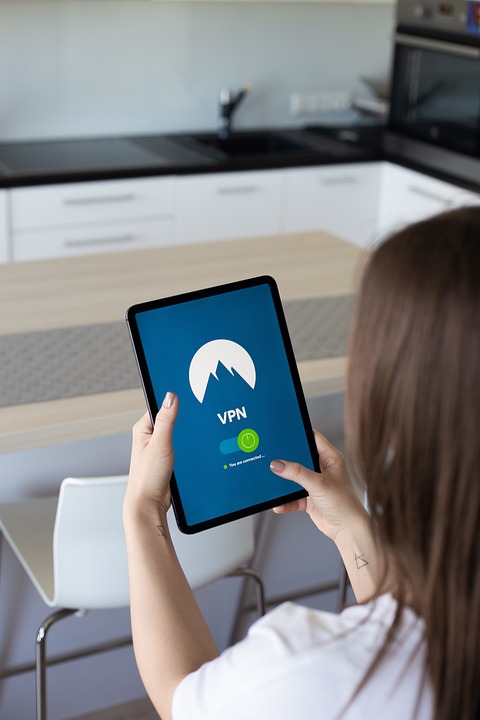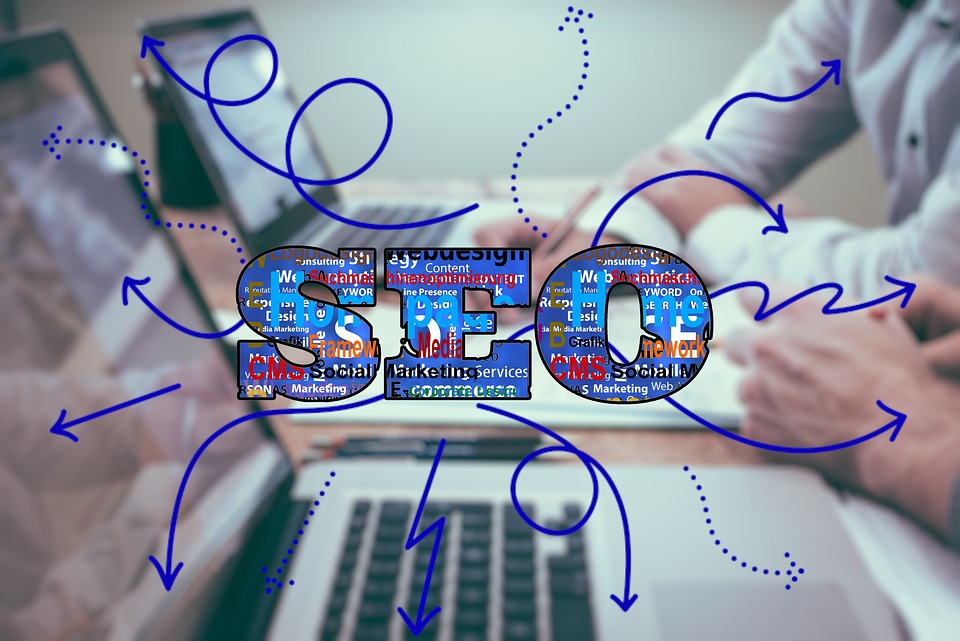Mastering On-Page SEO: A Step-by-Step Guide to Boosting Your Search Rankings
On-page SEO is the process of optimizing individual web pages to rank higher and earn more relevant traffic in search engines. While it may seem daunting, mastering on-page SEO can significantly improve your website’s visibility, drive more traffic, and boost conversions. In this article, we’ll provide a step-by-step guide on how to optimize your on-page SEO and boost your search rankings.
Understanding On-Page SEO
On-page SEO refers to the optimization of individual web pages to rank higher and earn more relevant traffic. It involves optimizing various elements on a page, such as content, meta tags, titles, descriptions, headings, and internal linking, to make it search engine friendly. On-page SEO is crucial because it helps search engines understand the content and relevance of a page, making it more likely to appear in search results.
Step 1: Conduct Keyword Research
The first step in mastering on-page SEO is to conduct thorough keyword research. Identify the most relevant and high-traffic keywords related to your business, product, or service. Use tools like Google Keyword Planner, Ahrefs, or SEMrush to find the best keywords.
Step 2: Optimize Page Titles and Meta Descriptions
A page title and meta description are crucial elements in on-page SEO. The title should be descriptive, unique, and include the target keyword. The meta description should be a concise summary of the page’s content, including the target keyword.
- Use a maximum of 60 characters for the title
- Use a maximum of 160 characters for the meta description
- Include the target keyword in both the title and meta description
Step 3: Write High-Quality, Keyword-Rich Content
High-quality content is the backbone of on-page SEO. Write informative, engaging, and optimized content that targets the target keyword. Aim for a minimum of 500 words per page.
- Use the target keyword naturally throughout the content
- Use variations of the target keyword to avoid repetition
- Use subheadings, bullet points, and short paragraphs to make the content scannable
Step 4: Optimize Headings and Subheadings
Headings and subheadings are crucial in organizing content and providing structure to a page. Use headings to break up the content and highlight important information.
- Use H1, H2, H3, and H4 headings to create a hierarchy
- Use the target keyword in headings and subheadings
- Avoid using too many headings and subheadings
Step 5: Optimize Images and Media
Optimizing images and media is essential in on-page SEO. Use descriptive file names and alt tags to describe the image.
- Use descriptive file names that include the target keyword
- Use alt tags that describe the image and include the target keyword
- Optimize images to reduce load times and improve user experience
Step 6: Internal Linking and Anchor Text
Internal linking is crucial in on-page SEO. It helps search engines understand the structure and hierarchy of your website.
- Use descriptive anchor text that includes the target keyword
- Link to relevant and related pages on your website
- Avoid using too many internal links and anchor text
Step 7: Mobile-Friendliness and Page Speed
Mobile-friendliness and page speed are critical in on-page SEO. Ensure that your website is mobile-friendly and loads quickly.
- Use responsive design to adapt to different devices and screen sizes
- Optimize images and media to reduce load times
- Use caching and compression to improve page speed
Step 8: Regularly Update and Refine Content
Regularly updating and refining content is essential in on-page SEO. Refine your content to make it more informative, engaging, and optimized.
- Regularly update content to keep it fresh and relevant
- Refine content to make it more optimized and engaging
- Use analytics to track performance and refine content accordingly
Conclusion
Mastering on-page SEO requires a thorough understanding of the optimization process. By following these steps, you can optimize your on-page SEO and boost your search rankings. Remember to conduct keyword research, optimize page titles and meta descriptions, write high-quality content, optimize headings and subheadings, optimize images and media, use internal linking and anchor text, ensure mobile-friendliness and page speed, and regularly update and refine content. With persistence and patience, you can achieve higher search rankings and drive more traffic to your website.
#Mastering #OnPage #SEO #StepbyStep #Guide #Boosting #Search #Rankings





Muchas gracias. ?Como puedo iniciar sesion?
**mind vault**
mind vault is a premium cognitive support formula created for adults 45+. It’s thoughtfully designed to help maintain clear thinking
Zum Beispiel können Sie mit einem Vulkan Spiele Promo Code ohne Einzahlung einen No Deposit Bonus
erhalten. Besuchen Sie gleich Vulkanspiele über unseren Link und sichern Sie
sich Ihren 10 Euro Bonus ohne Einzahlung! Zudem bietet der Bonus die Möglichkeit, Strategien zu entwickeln und die eigenen Vorlieben zu entdecken. Besonders
für Anfänger ist dies eine großartige Gelegenheit, die Grundlagen der Casinospiele
zu erlernen und erste Erfahrungen zu sammeln. Egal, ob Sie Slots, Tischspiele oder Live
Casino Spiele bevorzugen – der Bonus eröffnet Ihnen eine Vielzahl von Optionen. Dieser
Bonus bietet Ihnen die Chance, beliebte Spiele auszuprobieren und
echte Gewinne zu erzielen, ohne eigenes Geld einzusetzen.
Wer oft unterwegs ist und damit nur selten Platz
vor dem heimischen Computer nimmt, kann dank der Optimierung für Mobilgeräte fortan auch mit dem Smartphone oder dem
Tablet auf das Angebot von Vulkanspiele zugreifen. Sollten Sie einen Bonus in Höhe von 10
€ erhalten und der Umsatz mit dem Faktor x5
angegeben sein, müssen Sie zunächst 50 € an Spielautomaten setzen, ehe das Bonusguthaben in Form von echtem Geld über Optionen wie Banküberweisung
oder eWallet auf Ihr Konto übertragen werden kann. Bevor Sie eine
Auszahlung von Gewinnen aus Angeboten wie dem Vulkanspiele 10 Euro Bonus ohne Einzahlung beantragen können,
müssen zunächst die vom Online Casino festgelegten Bonusbedingungen erfüllt werden. Hier erhalten Sie schnell und unkompliziert Hilfe bei Anliegen zu Boni oder anderen Themen des Online Casinos.
Insgesamt ist der Prozess für die Einlösung der Vulkanspiele gratis
Prämie also nicht nur kinderleicht, sondern auch extrem schnell und voll automatisiert.
Dabei haben Sie so ziemlich die freie Auswahl, welchen Slot Sie
mit dem Bonusguthaben spielen möchten. Für Stammkunden gibt es laufend Wochenboni, Treueboni und
andere Bonusangebote, die situativ angepasst werden. Um
Ihnen die Entscheidung für eine erste Einzahlung zu erleichtern, wird ein üppiger Willkommensbonus angeboten. Neukunden werden mit den 50 Freispielen angelockt.
Eine der Aktionen, die bei Vulkan Vegas angeboten werden, sind die Freispiele ohne Einzahlung.
References:
https://online-spielhallen.de/revolution-casino-deutschland-eine-umfassende-bewertung-fur-spieler/
So können Sie ohne Tischlimit im Casino spielen, nachdem Sie Ihr Konto
mit Bitcoin oder einer anderen Kryptowährung aufgeladen haben. Gestreamte Casino Spiele ohne Limit sind laut deutschen Gesetz grundsätzlich verboten, ermöglichen aber oft die höchsten Einsätze im Casino.
Diese können jedoch deutlich flexibler gestaltet werden, da die Vorgaben des deutschen GlüStv entfallen. Das heißt, Sie können nach Ihren persönlichen Vorlieben ohne
Limit mit Echtgeld im Casino spielen. Die folgenden Casinos
ohne Limit bieten großzügige Auszahlungslimits, eine seriöse Lizenz und werden von vielen Spielern besucht.
Gemäß den aktuellen Gesetzen müssen Glücksspielanbieter strenge Vorgaben einhalten, um
den Schutz von Spielern zu gewährleisten und problematisches Spielverhalten einzudämmen. In Deutschland werden alle Glücksspiele gemäß dem Glücksspielstaatsvertrag von 2021 (GlüStV) geregelt.
Um solche lockeren Spielbedingungen anbieten zu können, operieren diese Casinos mit ausländischen Lizenzen.
Casinos ohne Limits bieten daher vor allem mehr Spielraum bei der
Einsatzhöhe, aber keine Garantie für bessere Ergebnisse.
Ähnlich wie 1€ Casinos werden auch Online Casinos ohne gesetzliche
Einzahlungslimits für viele Spieler immer interessanter. Sichere Casinos
ohne Limit verfügen über ein abwechslungsreich zusammengestelltes Spielangebot mit Spielen von namhaften und häufig ebenfalls lizenzierten Herstellern. Aber auch Limits wie tägliche, wöchentliche sowie monatliche maximale Auszahlungslimits oder eine
maximale Anzahl von offenen Auszahlungsanträgen solltest du kennen.
Dies ist insbesondere dann der Fall, wenn du Tischspiele bevorzugst und in einem der 13 Bundesländer lebst, die
dies nicht ermöglichen. Internationale Anbieter – oft als Casinos ohne LUGAS bezeichnet – verzichten auf diese Beschränkungen und bieten dadurch mehr Freiheit,
aber auch mehr Eigenverantwortung.
References:
https://online-spielhallen.de/casino-venlo-freispiele-ihr-weg-zu-kostenlosem-spielvergnugen/
Sie erhalten 100% bis zu 100 € plus 50 Freispiele
bei Ihrer ersten Einzahlung. Willkommensbonus Der Willkommensbonus ist unsere Art, Ihnen für Ihren Beitritt zu
danken. Letztendlich besteht das Ziel darin, ein nahtloses
und angenehmes Spielerlebnis zu bieten, das die
Spieler dazu bringt, immer wieder zurückzukommen.
Durch die Verifizierung der Identitäten der Spieler
zeigt das Conti Casino sein Engagement für die Bereitstellung einer
sicheren und vertrauenswürdigen Spielumgebung für alle Nutzer.
Der Prozess ist typischerweise schnell und effizient, sodass die Spieler ihn zügig und einfach abschließen können. Stellen Sie sicher,
dass Sie eine seriöse Zahlungsmethode wählen,
die Ihren Bedürfnissen entspricht, wie Kredit-/Debitkarte, E-Wallet oder Banküberweisung.
Dies ist ein einfacher Prozess, der die Auswahl einer Zahlungsmethode und die Eingabe
Ihrer Zahlungsdetails umfasst.
References:
https://online-spielhallen.de/drip-casino-test-bonus-auszahlungen/
Managing your bankroll is the key to sustained
gameplay and big wins down the line, so it’s worth stretching
every dollar as far as it’ll go. While they have lower transaction limits than other fiat payment options,
they provide an additional layer of security, like Inclave
casinos. Instead of entering your bank details, you can provide the
PayID casino with your unique identifier to make deposits and receive payouts in just a
few minutes. As a result, it stands as the most popular payment method at Australia’s fast withdrawal casinos.
You can play American, European, and French roulette at leading Australian gambling sites.
We recommend feature-packed video slots for a mix of fun themes and exciting gameplay.
They encompass a wide range of themes, gaming mechanics, and designs
to accommodate every player’s preferences. You can get your
hands on reload bonuses that match your second, third, or tenth transaction.
Check the Events tab to join Rocket tournaments and confirm eligible games, stake requirements
and prize distribution.
References:
https://blackcoin.co/explore-the-worlds-biggest-source-of-information-about-online-casinos/
When you deposit a certain amount, the casino adds money to
your bonus balance. If you are an active player, the casino offers you extra rewards.
Hell Spin is more than just an online casino; it’s a fiery
fiesta of fun that brings the heat right to your screen. The app maintains the same fiery
theme and easy navigation as the website, ensuringa seamless gaming experience.
Hell Spin encourages responsible gaming. Hell Spin’s mobile app is
a pocket-sized casino that you can take with you wherever you go.
The more you play, the hotter your rewards! Click on the “Log In” button, enter your email and password, and you’re ready
to play.
But don’t forget about regular bonuses and tournaments that take part weekly.
When you reach the highest level, you get exclusive
offers and the best possible deals. The casino
offers you to join a VIP Club! Do you enjoy playing
at Hell Spin and want to get even more features?
References:
https://blackcoin.co/woo-casino-review-all-games-promotions/
And dive into world-class gaming and entertainment experiences.
Kick back in the funky outdoor beer garden at The Merrywell pub,
or sip on cocktails overlooking the Perth city skyline at
the breathtaking new TWR bar. A copy of the rules governing the authorised games
on all our gaming machines can be accessed and viewed
below. If you can no longer access your old phone number, and you have
not already added your new phone number or another multi-factor authentication (MFA) option to your account, you
will have to contact us. If you lost access to your
CRA account, going through the registration process again may help
you get your access back.
Do I need my registered mobile number to login to the e-Filing Portal?
Refer to the Register DSC user manual to learn more.
For Individual users, if PAN is not linked with the Aadhaar, you will see
a pop-up message that your PAN is made inoperative as it is not linked with your Aadhaar.
You will receive the EVC on your mobile number registered with your bank
/ demat account. For Individual users, if PAN is not linked with the Aadhaart, you will see a
pop-up message that your PAN is made inoperative as it is not linked
with your Aadhaar.
I am an individual taxpayer. Secure access message has been added to protect from phishing websites.
What are the Login service improvements on the new portal?
The e-Filing vault option provides multi-factor authentication for login and password reset.
References:
https://blackcoin.co/the-best-australian-mobile-casinos-2025/
Words that can be used instead of ‘key’ and ‘important’ include
significant, critical, essential, vital, fundamental, and pivotal.
Some of these words are absolute synonyms, meaning they have the exact same
meaning as “important.” Other words are near synonyms,
meaning they are similar in meaning but not identical.
The word “important” suggests a degree of significance, whereas “crucial” implies something that is absolutely necessary or critical.
Understanding the nuances of these synonyms can help writers and speakers convey significance and relevance with precision and impact.
In this article, we will explore a variety of synonyms for the word “important” and how they can be used to enhance communication and
expression.
Some show need, some show impact, and some show urgency, so one word may not fit every sentence.
If it matters because many people respect it, choose notable
or influential. If it matters because it comes first, pick key, main, or primary.
If it matters because you need it, choose essential, necessary, or vital.
References:
https://blackcoin.co/best-live-dealer-online-casinos-in-australia/
Aussie players and traders will find that no deposit bonuses come in several key formats, each offering
a different way to explore online platforms without financial risk.
At their essence, no deposit bonuses serve as a low-risk gateway for Australians
to explore online casinos or trading sites.
No deposit bonuses present a standout opportunity for Australians keen to explore online casinos without having to spend a cent upfront.
Yes, some casinos offer no deposit bonuses like free spins for registration, though these are becoming rarer.
By using the bonus code “WICKED-WINS”, new players who sign up at Wicked Pokies Casino can receive a free pokie bonus of A$20.
All Australians can enter the bonus code “150FREESPINS” after signing up for an account
with Fair Go Casino to receive 150 free
spins on the pokie Tarot Destiny. Below, we take you through how we assess
and rate casino sites offering free spins.
Live dealer table games are designed to bridge the gap between land-based casinos and online gaming.
Online real money casinos in Australia are known for hosting video poker
and casino poker. Free spins are a great bonus because
they allow you to explore particular pokies and collect real cash prizes without dipping into your casino bankroll.
The best Australian online casinos share several characteristics, but the best of them provide all the following.
We’ve investigated and reviewed the top online casinos in Australia
to give you a sense of what to expect. The best online casinos in Australia
feature top-rated pokies, generous promotions, dedicated customer support, and compatibility for local payment methods.
References:
https://blackcoin.co/sign-in-your-gateway-to-online-casino-action/
A basketball game consists of two opposing teams of five
players, so there are a total of 10 players on the court at one time.
Beginning as a small importer of telecommunications switches,
the company evolved through decades of heavy investment in research and development, eventually challenging the
dominance of established Western tech giants. Despite these
obstacles, Huawei has demonstrated remarkable resilience by pivoting its business strategy towards
emerging technologies, including advanced telecommunications infrastructure,
cloud computing, and artificial intelligence. Founded in 1987 by Ren Zhengfei, Huawei has grown into one
of the world’s largest telecommunications equipment manufacturers and a leading smartphone producer.
Our NewsNow feed on Huawei delivers timely updates from reliable sources worldwide,
covering product launches, corporate announcements, policy changes, and market analyses.
This journey reflects broader shifts in global technology leadership and the increasing influence of Chinese innovation in the international marketplace.
The company’s initiatives in digital inclusion have
connected remote communities worldwide, while its educational programmes have trained thousands of ICT professionals across
developing nations. With over 197,000 employees and operations in more than 170 countries,
the Chinese multinational generated revenue exceeding $92 billion in 2023 despite facing significant international challenges.
Latest news on Huawei, providing comprehensive coverage of the tech giant’s smartphones, 5G equipment, sanctions, innovations, and global business
developments.
Travelling from New Jersey to New York needn’t take too much
time. Long Island Rail Road (LIRR) in New York is a train network that connects Manhattan with Brooklyn, Queens and the entire Long Island.
The MTA is a company that is responsible for
all public transportation in New York City. Buy your tickets online in advance to ensure a good price, a
good seat and a good time. You pay a one-time flat
fee for the discount pass and do not need to
buy separate tickets to those attractions in New York. This way
you will have a hassle-free transfer and start of your
time in New York.
References:
https://blackcoin.co/the-best-free-online-pokies-in-australia-2025-guide/
online betting with paypal winnersbet
References:
https://shiftlycrew.com/employer/online-casinos-that-accept-paypal/
casino sites that accept paypal
References:
maxes.co.kr
casinos paypal
References:
https://readeach.com/prestonjunkins
online casino uk paypal
References:
https://www.joinpartyple.com/bbs/board.php?bo_table=free&wr_id=791
paypal casino sites
References:
https://hirekaroo.com/companies/the-10-most-popular-online-casino-games/
online pokies paypal
References:
https://seven.mixh.jp/answer/question/online-casino-payid-withdrawal-australia-payid-withdrawal-pokies